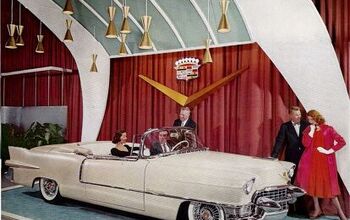TTAC Rewind: Thinking About Panel Gaps

Digging through the archives, I saw a Tim Cain piece about panel gaps and thought it might be fun to revisit.
I tend not to write about them a lot in my reviews unless they're pretty bad and there are no "pre-production" or "early build" excuses. Especially since we only test one car at a time -- my loaner might not be representative of what's coming off the line. But I do pay attention to them, and you can be sure I will call it out when appropriate.
That said, take some time today to see Tim's thoughts on the issue.
Happy Pride -- today is the day to celebrate where I live -- and see you tomorrow.
[Image: Andrew Will/Shutterstock.com]
Become a TTAC insider. Get the latest news, features, TTAC takes, and everything else that gets to the truth about cars first by subscribing to our newsletter.

Tim Healey grew up around the auto-parts business and has always had a love for cars — his parents joke his first word was “‘Vette”. Despite this, he wanted to pursue a career in sports writing but he ended up falling semi-accidentally into the automotive-journalism industry, first at Consumer Guide Automotive and later at Web2Carz.com. He also worked as an industry analyst at Mintel Group and freelanced for About.com, CarFax, Vehix.com, High Gear Media, Torque News, FutureCar.com, Cars.com, among others, and of course Vertical Scope sites such as AutoGuide.com, Off-Road.com, and HybridCars.com. He’s an urbanite and as such, doesn’t need a daily driver, but if he had one, it would be compact, sporty, and have a manual transmission.
More by Tim Healey


































Comments
Join the conversation
I guess the Enzo Ferrari quote I cited didn't get past the TTAC censor program. Too bad - it's the last word in panel gaps.
The plastic bodied Saturns were the worst I remember. It was functional...the plastic would expand and contract supposedly so a larger gap was required, but unless you had done your homework you just noticed giant gaps and moved on.
The Japanese advantage in panel gaps disappeared shortly after manufacture when rust widened them to entire panels.
I have a friend who was an executive with Autovaz before the Soviet Union collapsed. He tells us of the time they purchased some 'robots' from Japan to help install panels. The allowance for panel gaps was so wide that the robots would consistently stop as they kept detecting a 'fault'. Even re-programming them was problematic as the vehicles were so haphazard that the gaps were inconsistent and varied constantly.
Tesla's megacastings might have some effect on this topic going forward.